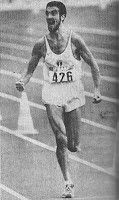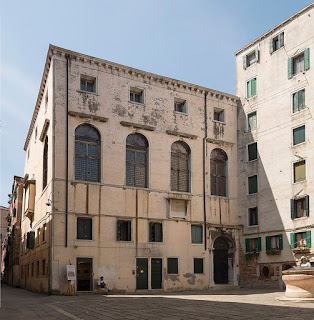Francesca Cuzzoni - operatic soprano
Diva who came to blows with rival on stage
Francesca Cuzzoni, an 18th century star whose fiery temper earned her a reputation as one of opera’s great divas, was born on this day in 1696 in Parma. Described rather unkindly by one opera historian of the era as “short and squat, with a doughy face” she was nonetheless possessed of a beautiful soprano voice, which became her passport to stardom. However, she was also notoriously temperamental and jealous of rival singers, as was illustrated by several incidents that took place while she was in the employment of George Frideric Handel, the German composer who spent much of his working life in London. Already established as one of the finest sopranos in Europe, Cuzzoni was hired by Handel in 1722. Handel at that time was Master of the Orchestra at the Royal Academy of Music, the company set up by a group of English aristocrats to stage Baroque opera, partly for their own entertainment but also as a commercial enterprise. One of his responsibilities was to engage the soloists for the company’s productions. He ran into immediate trouble with Cuzzoni, who was due to make her debut in Handel’s own Italian language opera Ottone at the King’s Theatre in Haymarket. Read more…
_________________________________________________________
Giacomo Casanova – adventurer
Romantic figure escaped from prison in a gondola
Author and adventurer Giacomo Girolamo Casanova was born on this day in 1725 in Venice. He is so well known for his affairs with women that his surname is now used as an alternative word for ‘womaniser’. Yet Casanova’s autobiography, ‘Story of My Life’, has come to be regarded as one of the most authentic sources of information about European social life produced during the 18th century. Casanova was widely travelled, had several different professions and was a prolific writer but he spent a lot of his time having romantic liaisons and gambling. The Venice into which he was born was the pleasure capital of Europe, a required stop on the Grand Tour for young men coming of age, because of the attractions of the Carnival, the gambling houses and the courtesans. Casanova graduated from the University of Padua with a degree in law and had a short career as an ecclesiastical lawyer before setting out on his adventures. He was attractive to women, being tall and dark and wearing his long hair powdered and curled. At various times he worked as a clergyman, military officer, violinist, businessman and spy. Read more…
________________________________________________________________
Gelindo Bordin - marathon champion
First Italian to win Olympic gold in ultimate endurance test
Gelindo Bordin, the first Italian to win the gold medal in the Olympic Marathon, was born on this day in 1959 in Longare, a small town about 10km (six miles) south-east of Vicenza. Twice European marathon champion, in 1986 and 1990, he won the Olympic competition in Seoul, South Korea in 1988. Until Stefano Baldini matched his achievements by winning the marathon at the Athens Olympics in 2004 and claiming his second European title in Gothenburg in 2006, Bordin was Italy’s greatest long-distance runner. He attained that status somewhat against the odds, too, having been sidelined for a year with a serious intestinal illness at the age of 20 and then being hit by a car while on a training run. Bordin’s victory in Seoul at last made up for the disappointment the Italy team had suffered 80 years earlier when Dorando Pietri crossed the line first in the marathon at the London Olympics of 1908 only to be disqualified. In a bizarre finish to the race, Pietri took a wrong turning on entering the White City Stadium and had to be helped to his feet five times after collapsing on the track through exhaustion. Read more…
_______________________________________________________________
Achille Vianelli - painter and printmaker
Artist from Liguria who captured scenes of Naples
The painter and printmaker Achille Vianelli, whose specialities were landscapes and genre pictures, notably in his adopted city of Naples, died on this day in 1894 in Benevento in Campania. For a while he worked at the French court, giving painting lessons to King Louis Philippe. Some of his works have sold for thousands of euros. Vianelli was born in 1803 in Porto Maurizio in Liguria. When he was a child, his family moved more than 1,200km (750 miles) to the other end of the Italian peninsula to the coastal town of Otranto in the province of Lecce, where his father, Giovan Battista Vianelli, Venetian-born but a French national, had been posted as a Napoleonic consular agent. Achille spent his youth in Otranto before, in 1819, he moved to Naples. His father and sister moved to France, although they would return to Naples in 1826. Achille took a job in the Royal Topographic Office. In Naples, he became close friends with Giacinto Gigante, with whom he shared an interest in painting. Together, they studied landscape painting, attending the school of the German painter Wolfgang Hüber. Read more…
































